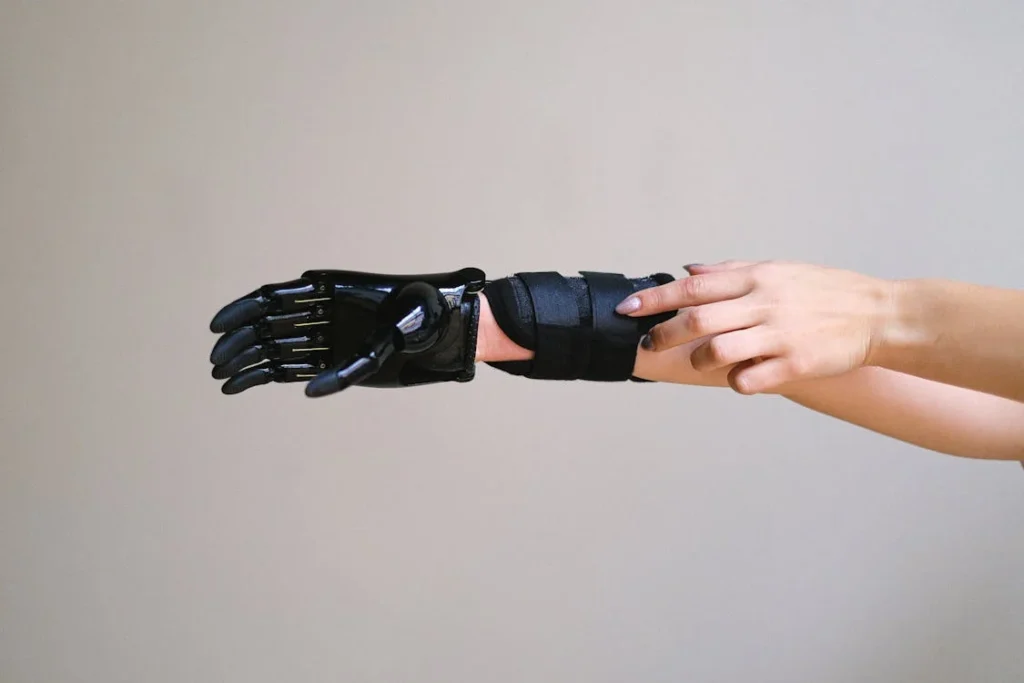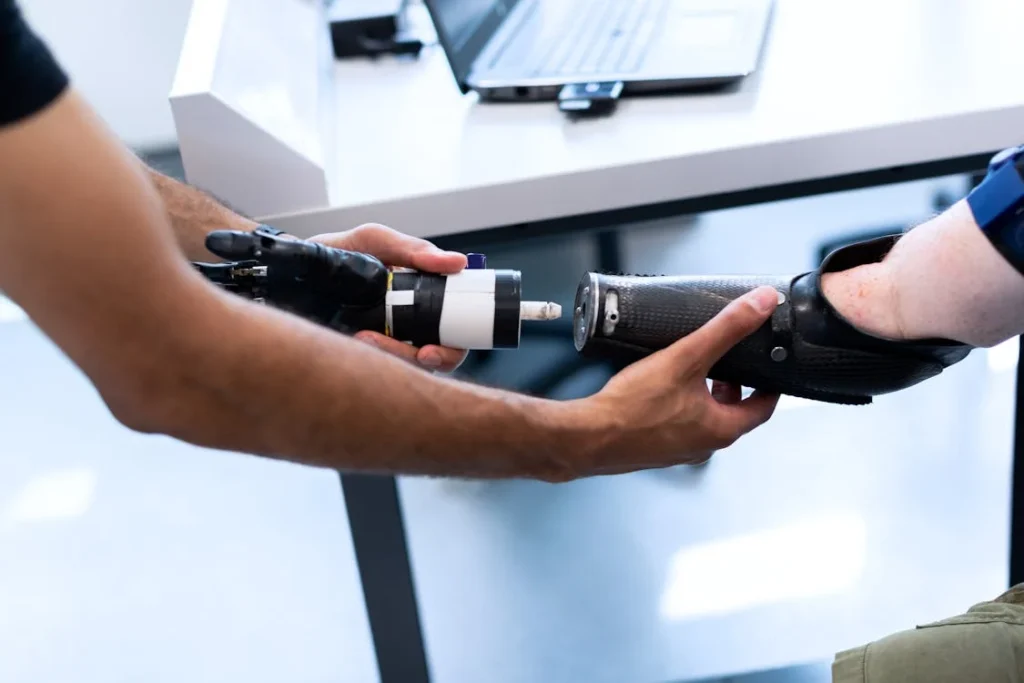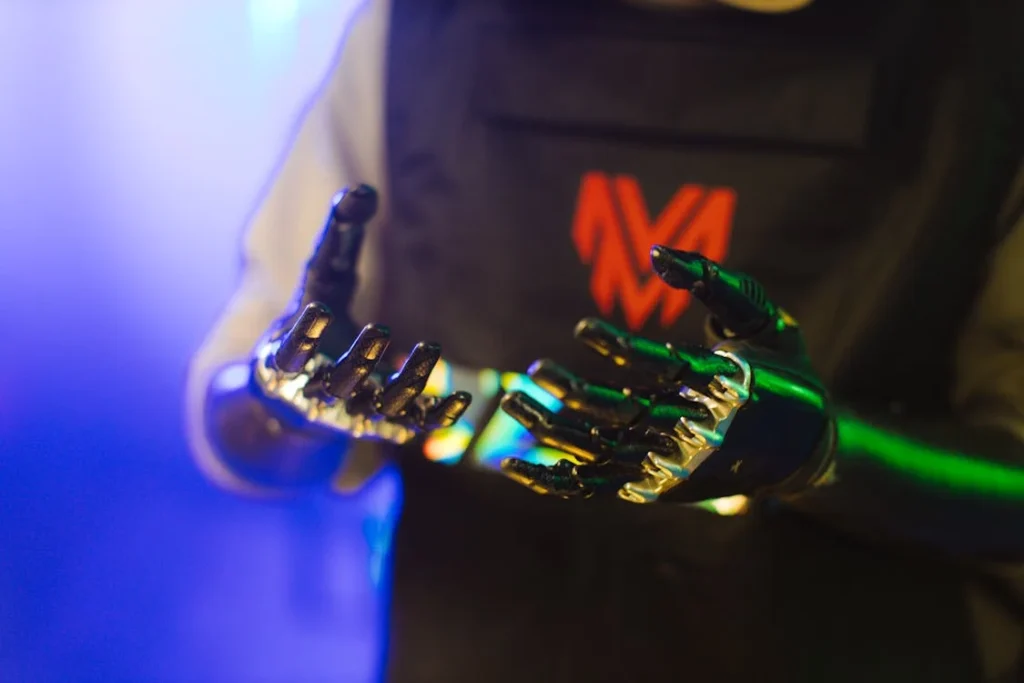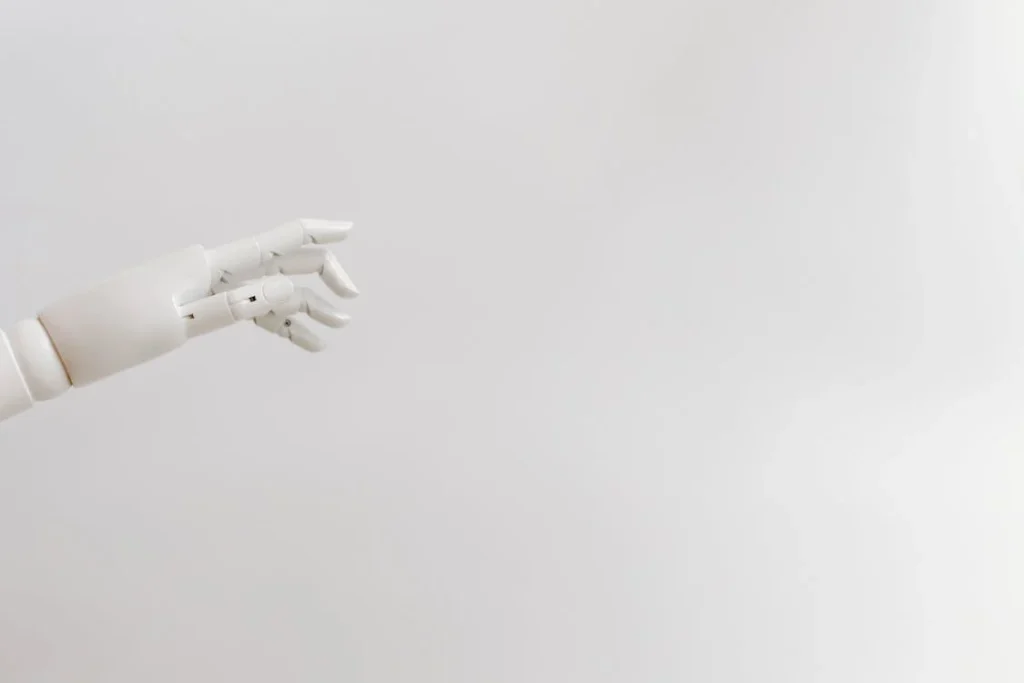Losing a hand or an arm can feel like losing a part of your independence. Simple tasks that once felt effortless—grabbing a cup, buttoning a shirt, or holding a child’s hand—suddenly require new ways of doing things. Fortunately, modern upper limb prosthetics can restore movement, function, and confidence. But with so many options available, choosing the right prosthetic can feel overwhelming.
The best prosthetic is not just the one with the latest technology—it’s the one that fits your lifestyle, your needs, and your comfort. The right prosthetic should feel natural, support your daily activities, and help you regain control of your life. Whether you need a prosthetic for work, personal independence, or sports, making the right choice requires understanding how different prosthetics function and what factors matter most.

Understanding the Different Types of Upper Limb Prosthetics
Before deciding on a prosthetic, it’s important to understand the different types available. Each type is designed to serve a specific purpose, and the best option depends on what you need from your prosthetic.
Some are designed for appearance, while others focus on advanced functionality.
Cosmetic Prosthetics for Aesthetics and Symmetry
For individuals who do not require active hand movement, cosmetic prosthetics offer a simple solution. These prosthetics are designed to look like a natural hand or arm, restoring body symmetry and improving confidence.
While they do not provide grip or motion, they help individuals feel more comfortable in social situations. They are lightweight, easy to wear, and do not require harnesses, cables, or batteries.
For those who want a prosthetic mainly for visual purposes, a cosmetic prosthetic can be an excellent choice. However, if functionality is a priority, other types of prosthetics may be better suited.
Body-Powered Prosthetics for Durability and Control
Body-powered prosthetics use a system of cables and a harness to control hand movement. These prosthetics rely on upper body strength to open and close the hand or hook.
The user pulls on the harness by moving their shoulder or upper body, activating the prosthetic to perform a gripping action. Many users prefer body-powered prosthetics for their durability and reliability.
They do not require electricity or batteries, making them an excellent choice for individuals who work in rugged environments or need a sturdy prosthetic for everyday tasks.
While they require more physical effort to operate, they offer a simple and effective way to restore hand function.
Myoelectric Prosthetics for Advanced Control and Precision
Myoelectric prosthetics use electrical signals from the muscles to control hand movement. Sensors placed inside the prosthetic socket detect muscle activity, allowing the user to open, close, and manipulate the hand with greater precision.
These prosthetics offer multiple grip patterns, making them ideal for tasks that require fine motor skills, such as writing, holding a phone, or picking up delicate objects.
Since myoelectric prosthetics do not require harnesses or cables, they provide a more natural feel and appearance.
However, they require charging and regular maintenance. For individuals looking for an advanced prosthetic that offers near-natural hand movement, myoelectric technology provides a powerful solution.

Factors to Consider When Choosing an Upper Limb Prosthetic
Selecting a prosthetic is not just about function—it’s about comfort, usability, and how well it integrates into your daily life. Every person has unique needs, and the right prosthetic should match your lifestyle, work requirements, and physical condition.
Understanding the key factors that influence prosthetic choice can help you make the best decision for long-term success.
Comfort and Fit: The Key to Long-Term Wearability
A prosthetic should feel like a part of you, not an obstacle. The fit of the socket—the part that connects your limb to the prosthetic—is one of the most important aspects of comfort. If the socket is too tight, it can cause pain and irritation.
If it’s too loose, the prosthetic may slip, making it difficult to control. A well-fitted socket ensures stability, minimizes pressure points, and allows for better movement.
Myoelectric prosthetics tend to be more comfortable because they do not require harnesses, allowing for free movement of the shoulder and upper body.
However, they need a strong connection to the residual limb for proper sensor function.
Body-powered prosthetics, while reliable, use a harness system that can sometimes feel restrictive, especially for those with limited shoulder mobility.
At Robobionics, we use advanced scanning and molding techniques to create customized sockets that provide the perfect fit.
A good fit not only improves comfort but also ensures the prosthetic functions efficiently, reducing strain and making it easier to perform daily activities.
Functionality and Daily Use
Every prosthetic is designed with a different level of functionality. Choosing the right one depends on what tasks you need to perform daily.
If you require fine motor control for tasks like typing, cooking, or handling delicate objects, a myoelectric prosthetic offers better precision.
These prosthetics allow users to switch between grip patterns, enabling more natural movement for a variety of activities. If durability and strength are more important, a body-powered prosthetic might be the better option.
These prosthetics are designed for individuals who need a sturdy, low-maintenance limb for physically demanding work. Since they do not rely on electronic components, they are more resistant to damage from rough use, moisture, and dust.
For individuals who prioritize aesthetics over function, a cosmetic prosthetic might be the best fit. These prosthetics provide body symmetry and a natural appearance but do not offer active hand movement.
Durability and Maintenance
How well a prosthetic holds up over time is another major factor to consider. Myoelectric prosthetics, while highly advanced, require battery charging and regular maintenance to keep the sensors and motors functioning properly.
Some users find this manageable, while others prefer a low-maintenance alternative. Body-powered prosthetics are known for their durability. With fewer electronic parts, they are easier to maintain and repair.
This makes them a practical choice for individuals who do not want to worry about battery life or frequent servicing. Regardless of the type of prosthetic, regular check-ups and proper care ensure a longer lifespan.
At Robobionics, we offer repair and maintenance services to help users keep their prosthetics in top condition.

Lifestyle Considerations: Finding a Prosthetic That Matches Your Needs
Beyond function and durability, your daily routine plays a big role in determining which prosthetic is right for you.
The best prosthetic is one that enhances your lifestyle rather than limits it. Whether you need it for work, hobbies, or general independence, understanding how different prosthetics integrate into your life can help you make a better choice.
Work and Professional Demands
Your job significantly influences which type of prosthetic will serve you best. If you work in an office, you might need a prosthetic that allows for precise hand movements, such as typing, handling paperwork, or using electronic devices.
Myoelectric prosthetics, with their multiple grip options, provide a significant advantage in these settings, allowing users to adjust their grip based on different tasks. For individuals in physically demanding jobs such as construction, agriculture, or mechanical work, durability is a priority.
Body-powered prosthetics are often the preferred choice because they do not rely on batteries and are built to withstand rugged environments. They also offer a high level of control for lifting, gripping tools, and handling rough materials.
If your job involves customer interaction or professional meetings, appearance may also be a factor.
Some people feel more comfortable with a prosthetic that has a natural skin-like covering, while others prefer a more mechanical or high-tech look. The key is choosing a prosthetic that makes you feel confident in your work environment.
Sports and Physical Activities
If you are an athlete or enjoy an active lifestyle, your prosthetic should support movement and endurance.
Some users opt for specialized prosthetic attachments designed for activities such as cycling, swimming, or weightlifting.
These attachments provide better grip, flexibility, and shock resistance, allowing for smooth and natural movement.
Myoelectric hands have improved significantly in recent years, offering stronger grips and better durability, making them more suitable for an active lifestyle.
However, body-powered prosthetics remain a favorite for individuals who need a tough and reliable limb that can handle various physical challenges without requiring recharging.
For those who enjoy outdoor adventures like hiking or camping, resistance to dust, water, and impact is crucial.
A prosthetic that is easy to clean and maintain will be more practical for these settings.
Ease of Use and Adaptation
Every prosthetic requires an adaptation period. The learning curve depends on the type of prosthetic and how intuitive it feels to the user.
Myoelectric prosthetics require muscle control training, as users need to develop the ability to send the right signals to activate hand movements.
Some users find this process easy, while others need time to adjust. Rehabilitation programs, such as those offered by Robobionics, help users build muscle strength and coordination to make the transition smoother.
Body-powered prosthetics, while mechanically simple, require physical effort to operate.
Users must develop upper body strength to pull cables and control the prosthetic effectively.
While this can feel tiring at first, many users adapt quickly and appreciate the direct control that body-powered designs offer.
The key to a successful adaptation is patience and practice. The more a prosthetic is used, the more natural it feels.
With the right training and support, users can gain full confidence in their prosthetic limb and integrate it seamlessly into their lives.

The Role of Fitment and Customization in Prosthetic Success
A well-fitting prosthetic is the difference between a device that enhances your life and one that causes discomfort or frustration.
No matter how advanced the technology, if a prosthetic doesn’t fit correctly, it can lead to pain, skin irritation, and difficulty in performing daily activities.
Proper fitment ensures that the prosthetic feels secure, responds accurately to movements, and provides maximum functionality.
Customization also plays a crucial role in ensuring a prosthetic meets an individual’s unique needs and lifestyle.
The Importance of a Properly Fitted Socket
The socket is the part of the prosthetic that connects to your residual limb, and its design plays a crucial role in comfort and control.
An ill-fitting socket can cause pressure sores, instability, and difficulty in using the prosthetic effectively.
The goal of a well-fitted socket is to distribute pressure evenly while allowing for natural movement.
At Robobionics, we use state-of-the-art scanning and molding technology to create sockets that match the exact shape of the user’s residual limb.
This precision fit reduces discomfort and enhances usability. Custom materials and padding are also incorporated to ensure that the socket remains comfortable even after prolonged use.
Customization for Lifestyle and Functionality
Customization goes beyond just fit—it ensures that the prosthetic works exactly the way the user needs it to.
Myoelectric prosthetics can be programmed with different grip patterns to match the user’s routine.
Some users may need a strong grip for lifting objects, while others require a delicate grip for handling fragile items.
Adjusting the sensitivity of the muscle sensors can also make the prosthetic more intuitive and responsive.
For body-powered prosthetics, adjustments can be made to the harness system to ensure that movement is smooth and does not cause unnecessary strain.
Different hand attachments, such as a mechanical hook or a specialized grip, can be selected based on the user’s tasks and preferences.
Weight and Balance Considerations
A prosthetic should feel balanced and natural when worn. If it is too heavy, it can cause fatigue and put strain on the shoulder and back.
If it is too light, it may not provide enough stability for controlled movement.
Myoelectric prosthetics tend to be slightly heavier than body-powered prosthetics due to their motors and batteries.
However, advancements in lightweight materials have significantly improved their comfort.
Body-powered prosthetics, being purely mechanical, are often lighter, but their harness system distributes weight differently.
Finding the right balance depends on the user’s strength, endurance, and comfort preferences.
The Trial and Adjustment Phase
Before finalizing a prosthetic, most users go through a trial phase where adjustments are made based on real-world use.
This allows users to test their prosthetic in different situations and identify any areas that need refinement.
Whether it’s a socket adjustment, sensitivity tuning, or strap modifications, small changes can make a big difference in overall comfort and usability.
Robobionics offers trial fittings and adjustment sessions to ensure that every prosthetic is perfectly suited to the user before final delivery.
This process helps users feel confident in their new limb, knowing that it has been tailored specifically for their needs.

The Psychological and Emotional Aspects of Using a Prosthetic
Choosing an upper limb prosthetic is not just about physical function—it’s also about emotional well-being.
The transition to using a prosthetic can bring a mix of emotions, from excitement and hope to frustration and uncertainty.
The right prosthetic should not only restore movement but also help rebuild confidence, independence, and self-image.
Understanding the psychological aspects of prosthetic use can make the adaptation process smoother and more positive.
Overcoming Initial Challenges and Frustration
For many new prosthetic users, the first few weeks or months can feel overwhelming.
Tasks that once felt effortless now require practice and patience. Whether it’s learning to control a myoelectric prosthetic with muscle signals or mastering the harness system of a body-powered prosthetic, the adjustment period can be mentally and physically demanding.
Frustration is a common emotion during this stage, but it’s important to approach it with persistence.
Setting small, achievable goals can make the transition easier. Instead of focusing on mastering every movement at once, users can start with simple tasks like holding a cup or picking up an object before progressing to more complex activities.
Over time, these small victories build confidence and make the prosthetic feel more natural.
Self-Confidence and Social Perception
How a person feels about their prosthetic can affect their confidence in social settings.
Some users worry about how others will react or if they will be treated differently.
Myoelectric prosthetics, with their advanced design and lifelike appearance, can help some users feel more comfortable in public, as they closely resemble a natural hand.
Others prefer the mechanical look of a body-powered prosthetic, viewing it as a symbol of resilience and strength.
Ultimately, confidence comes from within. The more comfortable a user feels with their prosthetic, the less self-conscious they become.
Engaging in normal activities, returning to work, or participating in social gatherings can help users embrace their prosthetic as a part of their identity rather than something that sets them apart.
Support from Family, Friends, and Community
Having a strong support system makes the adjustment process much easier.
Family members and friends play an important role by offering encouragement, helping with practice exercises, and providing emotional support.
Talking openly about challenges and successes can strengthen relationships and create a more positive experience. Connecting with other prosthetic users can also be incredibly helpful.
Support groups, online communities, and rehabilitation programs provide a space to share experiences, ask questions, and learn from others who have faced similar challenges.
Knowing that others have gone through the same journey and successfully adapted to their prosthetic can be a powerful source of motivation.
Shifting Perspectives: Embracing New Abilities
Many prosthetic users find that, over time, their perspective shifts. Instead of focusing on limitations, they begin to see new possibilities.
Prosthetic technology has advanced so much that many users are able to return to hobbies, sports, and careers they once thought were out of reach.
With consistent practice and the right mindset, prosthetics become less of a replacement for a lost limb and more of an empowering tool that expands what is possible.
At Robobionics, we believe that prosthetics are not just about restoring function—they’re about restoring confidence, dignity, and the ability to live life on your terms.
With the right prosthetic, proper training, and a supportive environment, users can achieve independence and redefine what they are capable of.

The Future of Upper Limb Prosthetics: Innovations and Emerging Technologies
The field of upper limb prosthetics has undergone remarkable advancements in recent years, offering users more functionality, comfort, and adaptability than ever before.
With rapid developments in artificial intelligence, 3D printing, and neural integration, the future of prosthetic technology is moving toward even more seamless and intuitive solutions.
Understanding these emerging innovations can help users make informed decisions about their current and future prosthetic choices.
Brain-Controlled Prosthetics: The Next Leap in Technology
One of the most exciting advancements in prosthetic research is the development of brain-controlled prosthetics, also known as neuroprosthetics.
Unlike traditional myoelectric prosthetics that rely on muscle signals, these advanced devices connect directly to the nervous system, allowing users to control their prosthetic hand using thoughts alone.
By decoding brain signals and translating them into movement, these prosthetics provide a more natural and effortless control system.
While this technology is still in the experimental stage, early trials have shown promising results.
In the coming years, brain-controlled prosthetics could offer an unprecedented level of precision, reducing the learning curve associated with traditional prosthetic use.
Sensory Feedback: Bringing Back the Sense of Touch
One of the biggest challenges with prosthetic limbs has been the lack of sensation.
Without the ability to feel textures, pressure, or temperature, users must rely solely on visual cues to judge grip strength and object handling.
However, new advancements in sensory feedback technology are beginning to change this.
Researchers have developed prosthetics with built-in sensors that can send electrical signals to the user’s nerves, allowing them to “feel” objects through vibrations or direct neural stimulation.
Some advanced myoelectric hands now include touch sensors that help users adjust their grip strength automatically, preventing objects from slipping or being crushed.
As this technology becomes more widely available, it will significantly enhance the user experience by making prosthetic hands feel more like natural limbs.
The Role of 3D Printing in Customization
3D printing has revolutionized prosthetic design by making it more affordable, customizable, and accessible.
Unlike traditional prosthetic manufacturing, which can be time-consuming and expensive, 3D printing allows for rapid production of prosthetic components that are tailored to each user’s specific measurements.
At Robobionics, we use 3D printing to create lightweight, ergonomic prosthetic hands that provide maximum comfort and flexibility.
This technology also makes it easier to produce replacement parts, reducing long-term maintenance costs and ensuring that users always have access to the latest improvements.
In the future, fully customized prosthetics that perfectly match each individual’s anatomy and movement patterns will become the standard.
Smart Prosthetics with AI Integration
Artificial intelligence is playing an increasing role in prosthetic development, helping devices learn and adapt to the user’s unique movement patterns.
AI-powered prosthetics can analyze muscle signals and adjust their grip strength, speed, and response time based on real-world use.
Some of these prosthetics even include predictive learning, allowing them to anticipate the user’s intended movements before they happen.
This means that instead of requiring conscious effort to control each movement, AI-integrated prosthetics will eventually allow users to perform tasks as naturally as they would with a biological hand.
Combined with sensory feedback and brain-control technology, AI-driven prosthetics could bridge the gap between artificial and natural limb function in the near future.
What the Future Holds for Prosthetic Users
The future of upper limb prosthetics is bright, with continuous innovations pushing the boundaries of what is possible.
While traditional prosthetic solutions already offer incredible levels of independence, the next generation of prosthetics will focus on making artificial limbs feel even more natural, responsive, and intuitive.
As these technologies continue to evolve, Robobionics remains committed to staying at the forefront of prosthetic advancements.
Our mission is to ensure that every individual has access to the best solutions available, helping them regain independence and confidence through cutting-edge prosthetic technology.
Conclusion
Choosing an upper limb prosthetic is a deeply personal decision that goes beyond technology—it’s about finding the right balance between function, comfort, and lifestyle needs. Whether you prioritize durability, precision, aesthetics, or ease of use, the best prosthetic is the one that empowers you to regain independence and confidence in your daily life.
From body-powered prosthetics that offer reliability and strength to advanced myoelectric hands that provide intuitive movement, each option has unique advantages. Factors like fitment, rehabilitation, and emotional adaptation also play a crucial role in long-term success. The right prosthetic should not just restore movement but also integrate seamlessly into your life.
At Robobionics, we are dedicated to helping individuals find prosthetic solutions tailored to their unique needs. With innovations in customization, sensory feedback, and AI-driven control, the future of prosthetics is more promising than ever. If you are ready to explore the best options available, book a free consultation today and take the first step toward a more independent and fulfilling life.




Pingback: Prosthetics 101: Understanding the Types – Prosthetics Blog